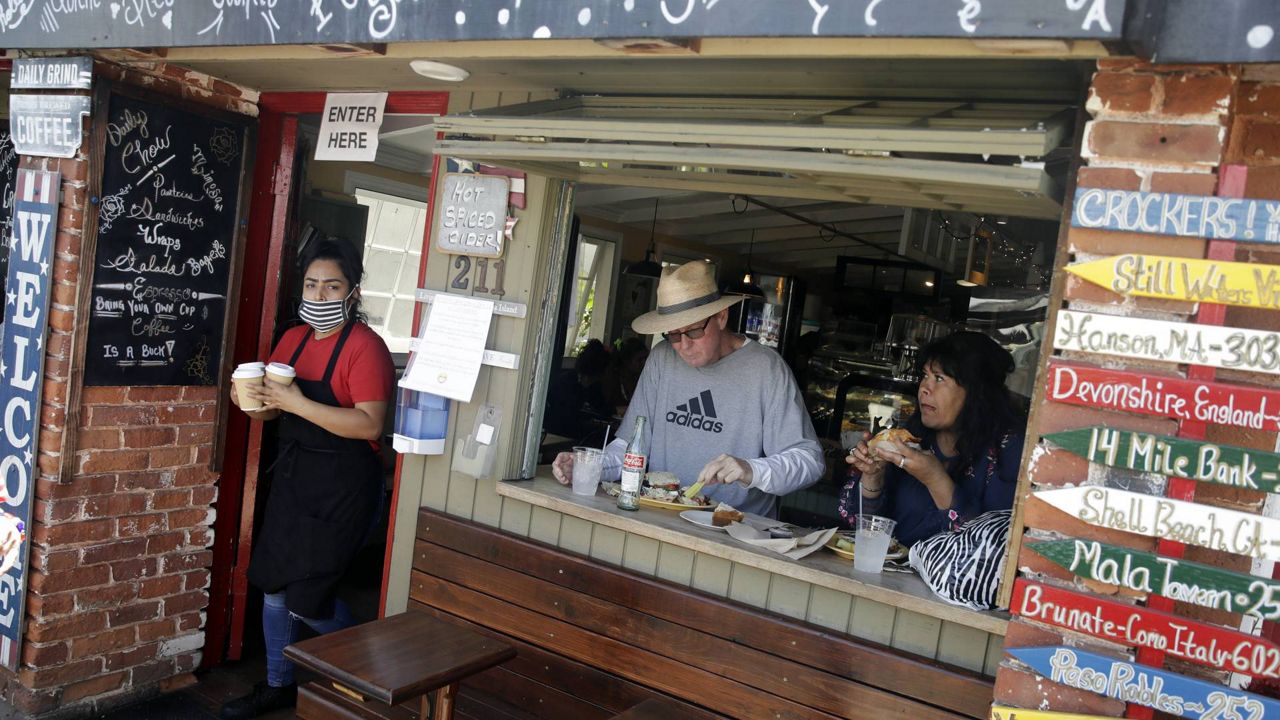SANTA ANA, Calif. (CNS) — Orange County entered the less restrictive red tier of the state's coronavirus regulatory system Sunday, allowing for bigger crowds in retail stores and the reopening of museums, movie theaters and indoor dining at restaurants.
"We expected it — it's almost anti-climactic at this point, but it's a step forward. It gives people the relief they've been waiting for," Supervisor Doug Chaffee said late last week.
What You Need To Know
- Orange County reported 151 new COVID-19 cases and 31 additional deaths on Sunday
- The county entered the less restrictive red tier of the state's coronavirus regulatory system Sunday
- The OCHCA reported 241 COVID-19 patients in county hospitals — a slight increase from the 237 reported Saturday
- Wineries, breweries, and distilleries can now reopen for outdoor business only
"The governor is finally changing his rules in favor of getting us back to some form of normal," Supervisor Don Wagner said. "Good for him. And good for the people of Orange County who have been following safety protocols and getting the vaccine to protect themselves, their friends, and family."
The county had been preparing to move from the most restrictive purple tier to the red tier by next Wednesday, but the timetable was moved up to one minute after midnight Sunday when the state met its goal of inoculating two million Californians in underprivileged communities where coronavirus has spread more widely.
The red tier allows for many more businesses and organizations to reopen. For instance, retail stores can allow for half capacity instead of 25%, and museums, zoos and aquariums can reopen for indoor activities at 25% capacity, as can movie theaters, gyms and restaurants.
Wineries, breweries and distilleries can reopen for outdoor business only.
Meanwhile, the Orange County Health Care Agency reported 151 new cases of COVID-19 and 31 additional deaths Sunday, raising the cumulative totals to 248,712 cases and 4,465 fatalities.
Of the deaths reported Sunday, one were skilled nursing facility resident and three lived in assisted living facilities, raising the death toll among those groups to 1,023 and 493, respectively.
The OCHCA reported 241 COVID-19 patients in county hospitals — a slight increase from the 237 reported Saturday — and 76 in intensive care, up from 71 the previous day. The county has 35.5% of its ICU bed space available, and 70% of its ventilators.
The county also reported 9,487 COVID-19 tests, raising the cumulative total to 3,181,309. There have been 239,130 documented recoveries.
On Tuesday, when the state updated its weekly numbers in the tiers network, the county's test positivity rate improved to 3.2% from 3.9% last Tuesday, and the adjusted case rate per 100,000 people on a seven-day average with a seven-day lag improved from 7.6 to 6. The county's Health Equity Quartile rate, which measures positivity in hotspots in disadvantaged communities, improved from 4.9% last week to 4.1%.
Under the previous standards, the county was in the red tier with case rates per 100,000 and in the orange tier for the positivity rates.
Orange County CEO Frank Kim said the county's case rate was at 4.8 per 100,000 on Friday and the positivity rate was at 2.6%. The positivity rate for the Health Equity Quartile was at 3.7%, Kim said, adding that he was "excited" about moving up to the red tier.
But Kim cautioned residents to keep their guard up.
"People should be careful and I think most people in Orange County are smart enough to assess their level of comfort and safety," he said. "For me, I intend to go visit my mom and have a meal with her, which will be great."
Kim said he was encouraged that Congress has approved the $1.9 trillion stimulus because it will provide much-needed funding to help pay for a $200 million budget hole created by COVID-19-related expenses. Some of those expenses will be covered by the Federal Emergency Management Agency, but the stimulus can cover the rest and also help defray expenses from future booster- shot campaigns and other expenses over the next few years, he said.
Kim said officials estimate the county could receive nearly $616 million and cities in the county that receive Community Development Block Grant funding could receive about $715 million.
"Now I don't have to worry whether I'll have FEMA support for booster shots for next year or the year after," Kim said. "We'll sit down and figure out how to appropriately budget this money over a multi-year period of time. The intent is to make sure it's available to ride out COVID for the next couple of years."
The federal funding will come with specific directions on what it can be used for, but since the county has been dipping into its general and rainy day funds to pay for testing and vaccine distribution, the stimulus will at least indirectly help the county avoid significant service cuts and layoffs, Kim said.



